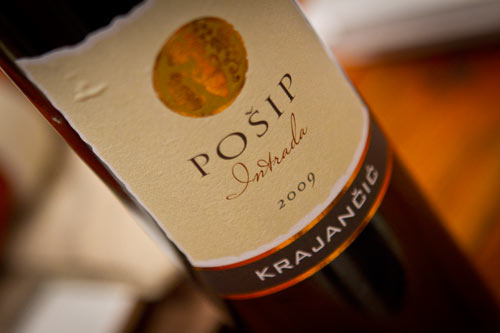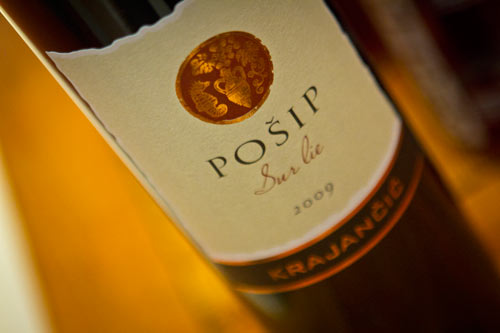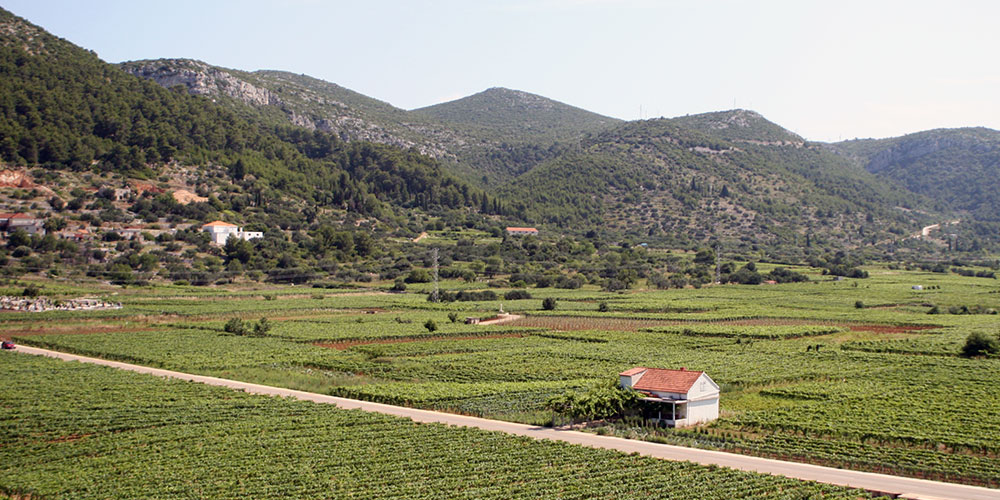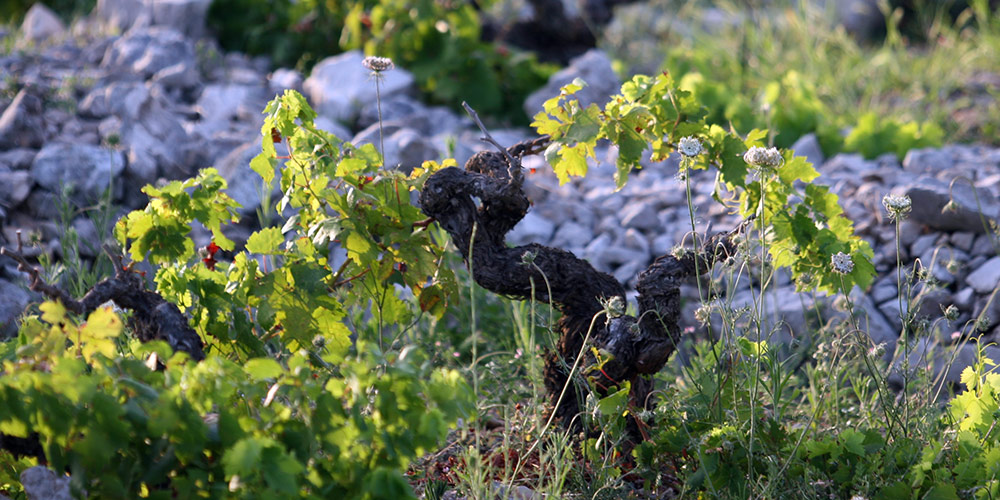The islands off the coast of Croatia are nothing short of stunning and Korčula is the one island that has the advantage of not being a long, once-a-day ferry ride away from the mainland, and about two hours’ drive north of Dubrovnik. At the same time, it offers all the island beauty and is surprisingly quiet once you get away from the tourist-fest of Korčula City on the east end. If one is so inclined, you can get even more peace by going to the south-facing village of Zavalatica where winemaker Luka Krajančić is based.
Heading down the same road that goes to Pošip Čara you’ll know when you’ve hit Zavalatica. Its brilliant blue waters are some of the clearest to be found. The dock on one side of the village is full of kids plunging in during the peak of the summer. On the other side, down a single lane road lies Plaža Žitna which is an equally shimmering, hidden cove that at first seems it will be your very own beach until you see all the cars with Czech license plates parked at the top of the path that leads down.
But it’s here where Luka lives, makes his mostly Pošip-based wines, and composes his poetry–a natural fit given that 18th century poet Petar Kanavelić also called Zavalatica home for part of the year. For those who have seen either the winery’s pamphlet or the original Croatian-labelled bottles, you’ll be familiar with Luka’s wordcraft. It’s hard to translate it in to English as not only is poetry a bastard to shift between languages, but it’s also written in the Korčulan dialect of Croatian–yes there are dialects specific to each of the islands, as if Croatian wasn’t hard enough for foreigners. But, on to the wines.
Since Yugoslav times, Korčula has been Pošip country. But, given the amount of sun, it would be quite easy to grow reds which Luka does in a very, very small amount. Available commercially though are all the white wines of this lovely, bold, yet nuanced grape that has made the island its adopted home.

The 2009 Intrada has 13.4% alcohol and serves as a great example of Pošip. We found that the nose had citrus tones of both citron as well as grapefruit. The body can be a touch buttery, but has strong, well-structure acidity that screams for food pairings such as seafood. On that note, while the label says it has hints of “seashells” we found that this could be best summed up as a pleasant saltiness that works to accentuate the acidity.
Despite all of this, it still composes itself with a good minerality and finishes clean. To best compare it to a French varietal that people might be more familiar with, you could say that it has Chenin Blanc qualities. Important to note is that even though it’s a 2009 vintage, it could probably age even a few more years if desired.

With the 2009 Sur Lie (13.5% alcohol) you take the Intrada and toss in a large degree of oak aromas and flavors. If you like oaky whites, then this is an ideal wine for you. For us, the oak detracted from the overall stellar grapes to some extent.
The Sur Lie does benefit from breathing more than the Intrada and after about 45 minutes or so, some interesting elements develop such as a hint of graham crackers. But, more interesting is probably this quality that kicks out of the nose just before you drink it that is reminiscent of pršut (Croatian ham) and works well with the oak in the body.

This 2007 Pošip was probably our favorite of the lot. You would never know that it has a touch higher alcohol at 13.9% due to the wonderfully fragile, light nose that the wine carries. It almost seems as if there is a touch of lavender to the nose which might be the reason that Luka has an illustration of a sea urchin with lavender on its spines decorating the bottle.
The defining element to both the nose and the body though, is orange blossom. It’s a slightly sweet and citric element with a touch of oil and meatiness to it. Very, very pleasing and it all goes to show that, as suspected in the 2007 Intrada, these wines are indeed quite happy to age.
Many thanks to Ceri at Biondivino for hosting our little tasting as well as Blue Danube Wine for providing the samples of these latest vintages.
We talk a great deal more about Pošip as well as other Croatian wines in our Dalmatian wine guide.


Sur Lie is the best oak aged pošip you can find in Croatia, big wine with a long future
I had a delicious Pošip at Nautika Restaurant in Dubrovnik. I asked who made it but all that the waitstaff (and the wine label) could tell me was “Korčula.” It was p-e-r-f-e-c-t with the fish soup consomme I had it with.
It was most likely the Marco Polo from Čara, but Nautika is a more upscale place, so it could have actually been one of the smaller wineries like Krajančić mentioned here or Kunjašić. Not really a bad one among them though.
I am glad you also found 2007 Pošip, that in Croatia is sold under the name Ježina, is the best of all three. Did it have the screw cap? It was my favorite wine of the last summer.
Perfect to drink when you come back from the beach for example in Pupnatska Luka :) Sooo easy to drink, minerals and sea iodide in the nose, ripe fruits in the mouth… Incredible it is from 2007 but it is still very alive. I would like to try it with sushi, what do you think? Too dry?
In sur lie I found hot chilly pungency, this was something new to experience in a wine.
Aaahh… I still remember that hot day in August when we visited Luka in Zavalatica. Luka’s poetry, wine, cheese… I miss Korčula a lot.